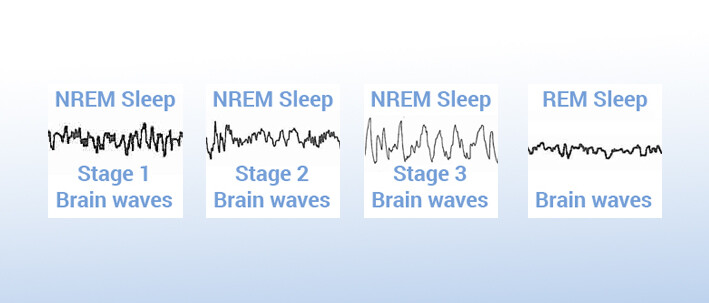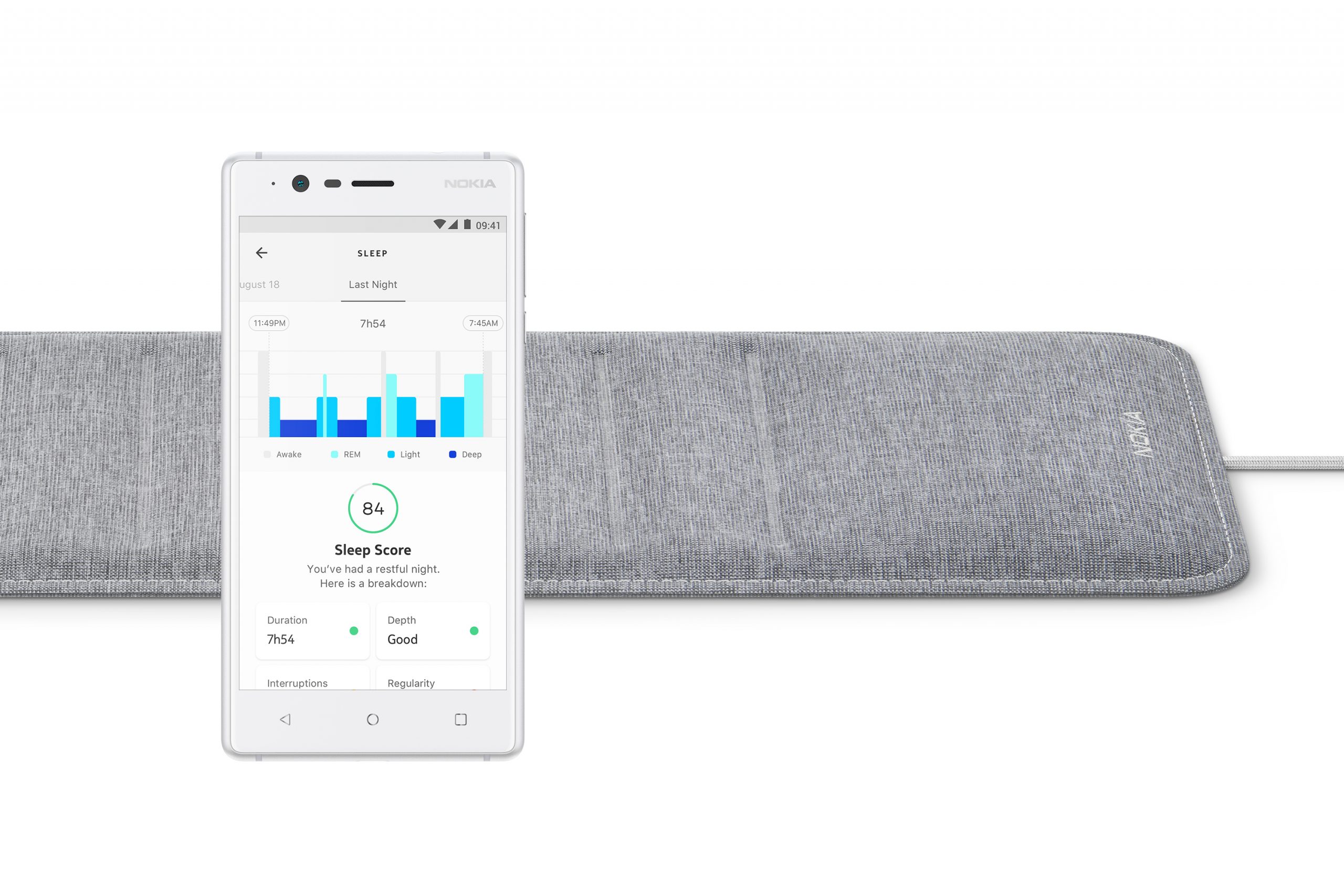
Compared to the tracking of our daytime activities, sleep monitoring is a little harder to grasp. The variations of intensity between walking and running are easy to understand, but what differentiates light sleep from deep sleep? This blog post lists 4 facts about sleep cycles and sleep stages.
Basic knowledge #1
Sleep scientists have identified two broad categories of sleep stages: Rapid Eye Movement Sleep (REM sleep) and Non-Rapid Eye Movement Sleep (NREM sleep). Until 2007, NREM sleep was divided into 4 different stages. But that year, the American Academy of Sleep Medicine decided to merge the third and fourth stages: there are now 3 kinds of NREM sleep.

Basic knowledge #2
The stages of sleep can be identified using various techniques, among which the recording of EEG waves (electroencephalographic waves—also known as brain waves) and the monitoring of certain body data (movement, heart rate, respiratory rate, temperature). While the tedious EEG technique—the recording of electrical activity along the top of the head via dozens of electrodes on your scalp—is almost only used in clinical contexts, a more accessible sleep tracking technique involving body data analysis has become widespread.
Basic knowledge #3
Did you know that people who experience quality sleep are better able to manage their weight, be more active and have lower blood pressure than those who don’t? Good news: Activity trackers like the Withings Move, Steel HR Sport, and Steel HR provide seamless sleep tracking right on your wrist and ingenious wake-up functions, along with an evaluation of your night in the Health Mate app.
 Basic knowledge #4
Basic knowledge #4
Withings Sleep, an advanced sleep-tracking device, offers sleep cycles analysis (deep, light and REM), heart rate tracking and snore detection, as well as a Sleep Score so you can learn about the parameters that impact your sleep quality, including sleep duration, sleep depth, and interruptions, plus the time it takes to fall asleep and wake up. It features an easy one-time setup under the mattress, and all data automatically syncs to the free Health Mate app via Wi-Fi. What’s not to love?

Featured image: Kate Stone Matheson




